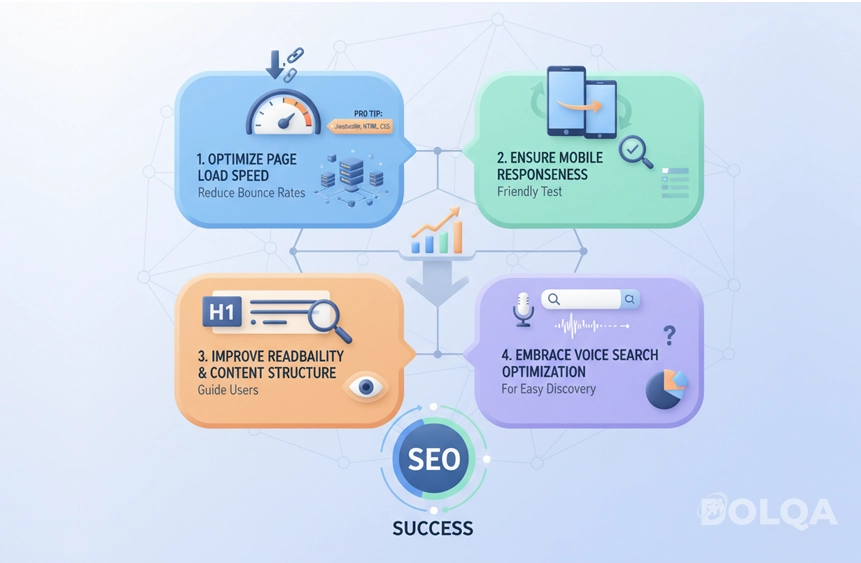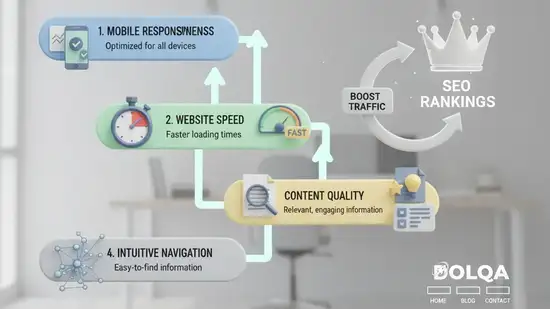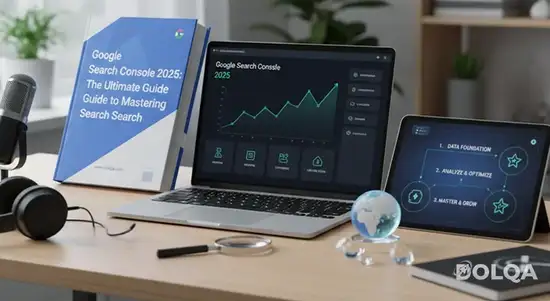Introduction
In today’s digital landscape, search engines like Google prioritize websites that deliver exceptional user experiences (UX). A well-optimized website not only ranks higher in search results but also retains visitors longer, reduces bounce rates, and increases conversions.
If you're new to user experience SEO and website optimization, this guide will walk you through the key strategies to improve UX and enhance your Google ranking factors. By implementing these UX best practices, you’ll create a seamless, engaging, and high-performing website.
Why User Experience Matters for SEO
Google’s algorithm increasingly considers UX signals when ranking websites. Some of the most important Google ranking factors include:
- Page Load Speed – Faster websites rank higher.
- Mobile-Friendliness – Google prioritizes mobile-optimized sites.
- Bounce Rate – High bounce rates signal poor UX.
- Dwell Time – Longer visits indicate valuable content.
- Navigation & Usability – Easy-to-use sites perform better.
By focusing on website optimization and UX best practices, you can align with Google’s ranking criteria and improve your search visibility.
Top UX Best Practices to Boost SEO
1. Optimize Page Load Speed
A slow website frustrates users and harms SEO. To improve speed:
- Compress images (use tools like TinyPNG or ShortPixel).
- Enable browser caching to store static files.
- Minify CSS, JavaScript, and HTML to reduce file sizes.
- Use a Content Delivery Network (CDN) for faster global loading.
Pro Tip: Google’s PageSpeed Insights tool helps identify speed issues.
2. Ensure Mobile Responsiveness
With over 50% of web traffic coming from mobile devices, a mobile-friendly design is non-negotiable.
- Use a responsive theme (if using WordPress, choose mobile-optimized templates).
- Test on multiple devices (Google’s Mobile-Friendly Test tool).
- Avoid intrusive pop-ups that disrupt mobile browsing.
3. Improve Readability & Content Structure
Well-structured content keeps users engaged and reduces bounce rates.
- Use short paragraphs and bullet points for easy scanning.
- Include headings (H1, H2, H3) to organize content.
- Add multimedia (images, videos, infographics) to break up text.
4. Enhance Navigation & Internal Linking
A confusing website leads to high bounce rates. Improve navigation by:
- Using a clear menu structure (avoid clutter).
- Adding a search bar for easy content discovery.
- Implementing internal links to guide users deeper into your site.
5. Reduce Bounce Rate with Engaging Content
High bounce rates signal poor UX. To keep visitors engaged:
- Write compelling meta titles and descriptions to attract clicks.
- Use storytelling techniques to make content relatable.
- Include a clear call-to-action (CTA) to guide users.
6. Optimize for Voice Search & Featured Snippets
Voice search is growing, and optimizing for it can boost rankings.
- Use natural language in your content.
- Answer common questions in a concise format.
- Structure content for featured snippets (bullet points, lists, tables).
7. Leverage User Feedback & Analytics
Understanding user behavior helps refine UX.
- Use Google Analytics to track bounce rates, dwell time, and exit pages.
- Run A/B tests to compare different layouts and CTAs.
- Collect user feedback via surveys or live chat.

Conclusion
Improving user experience SEO is essential for higher rankings and better engagement. By following these UX best practices, you’ll create a website that not only ranks well but also delights visitors.
Start with website optimization—test your speed, mobile-friendliness, and navigation. Continuously refine your content and design based on user feedback. Over time, you’ll see improved Google ranking factors and a more successful online presence.
Ready to boost your SEO with better UX? Start implementing these strategies today!







Comments (0)
Leave a Comment
No comments yet. Be the first to comment!